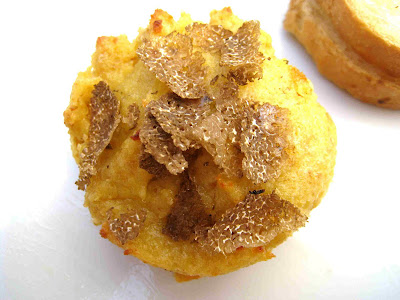 My wonderful Mum sent me a care package from Hong Kong last week of dried wood ear mushrooms. You can actually buy these in most Chinese supermarkets but the ones she found have been ingeniously ‘shrunk-dried’ into tiny packages the size of a matchbox. Add hot water and hey presto, enough lovely mushrooms for two portions of the salad pictured above explodes out of seemingly nowhere!
My wonderful Mum sent me a care package from Hong Kong last week of dried wood ear mushrooms. You can actually buy these in most Chinese supermarkets but the ones she found have been ingeniously ‘shrunk-dried’ into tiny packages the size of a matchbox. Add hot water and hey presto, enough lovely mushrooms for two portions of the salad pictured above explodes out of seemingly nowhere!It reminds me of those magic towels I was given as a child, where a compressed capsule the size of a ping pong ball would unfurl into a generously proportioned beach towel with a little watery encouragement. It was the same principle, though the results were not quite as delicious.
This exciting gift dovetailed with my discovery of jellyfish that is packed in whole unsliced pieces and preserved in brine. Having found other pre-packaged varieties of jellyfish rather disappointing (the jellyfish strands lacked texture and were accompanied by the chemically taste of artificial preservatives) this was a real find. Once opened, the jellyfish requires a good soaking in clean water for 3-5 hours, but the results are the best I have found so far in London.
The salad below is a celebration of all things crunchy, bouncy, crisp and clean, with a little ham to add a savoury undertone. In Hong Kong I would use wafer thin slices of Yunnan ham, but Italian prosciutto works well too.
about 250g wood ear mushrooms, rehydrated in hot water, then strained
half this amount of jellyfish, sliced into strips about half a cm thick
a stick of celery from near the heart (not the tough outer bits) sliced as thinly as you can into strips the same size as the jellyfish
a tablespoon of light soy sauce
a teaspoon of sesame oil
two tablespoons of rice vinegar
toasted white and black sesame seeds
Give the wood ear mushrooms a good shake to remove any excess water, or dab lightly with kitchen roll. Slice the mushrooms roughly into easy to eat strips. Toss all the ingredients together except for sesame seeds, ham and salt, then cover and leave to chill in the fridge for a few hours at least.











 Charles Campion
Charles Campion



